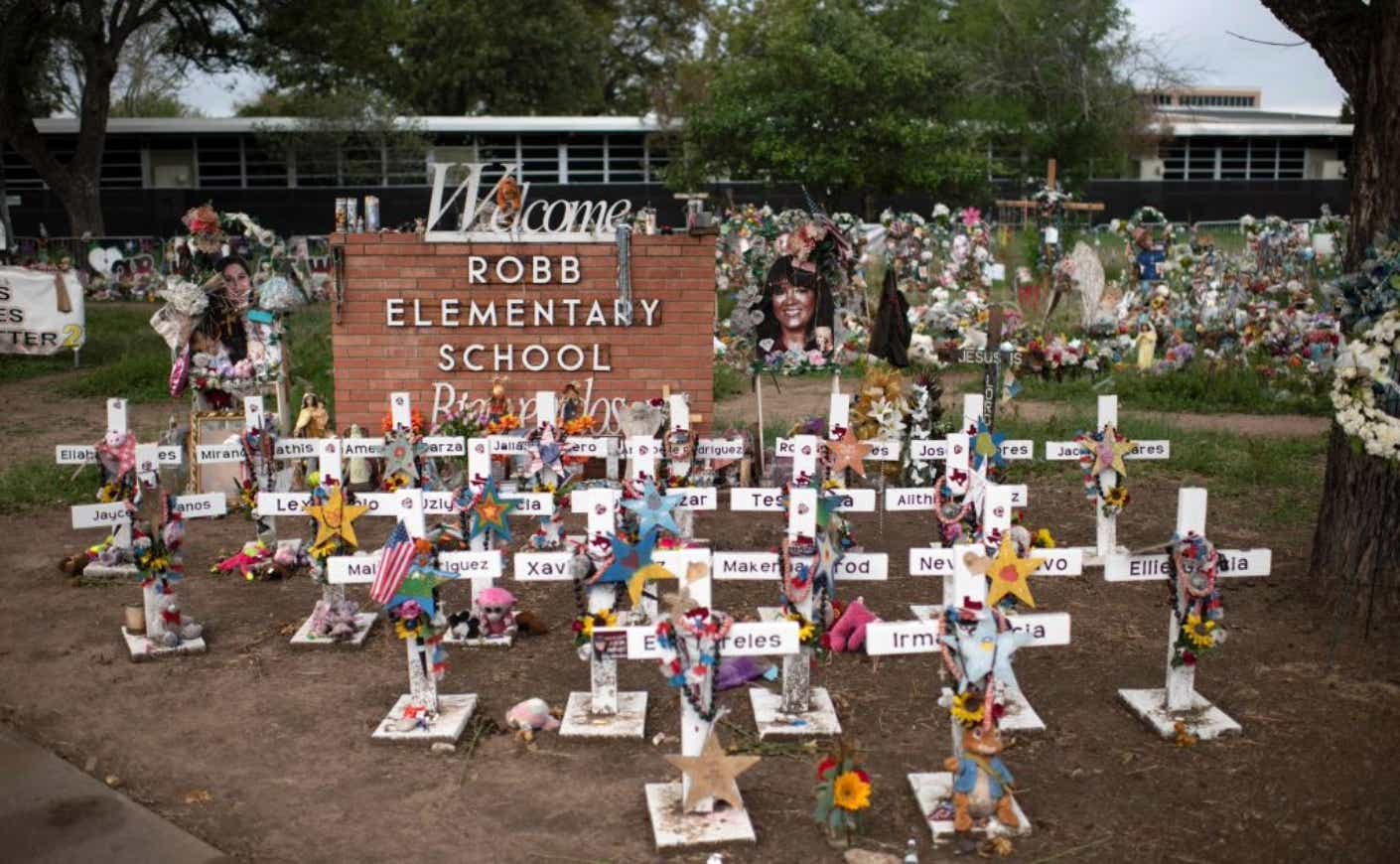The Justice Department issued a long-awaited report on Thursday detailing the response to the mass shooting at Robb Elementary School in 2022 and it did not hold back. Throughout 575 pages, officials provide a scathing review of the cascade of mistakes and missteps that contributed to the deaths of 21 people, including 19 kids.
During a press conference following its release, Attorney General Merrick Garland outlined the report’s key findings calling the shooting a “failure that should never have happened.” He also met victims’ families a day before the findings were released and privately briefed them on what would soon be revealed to the public.
“The report is unflinching in its description of the failures,” Austin American-Statesman investigative reporter Tony Plohetski tells Katie Couric Media. “It’s almost saying that there was a casualness in how school officials and law enforcement approached school safety...and that school became the scene of the deadliest school shooting in Texas.”
As many affected families still cope with the loss of their loved ones, here’s a look at some of the most significant revelations from the report and whether any of those responsible will face charges.
What’s in the Uvalde report?
While many of the grim details of the faulty response were already known, the federal review marks the most thorough account yet of one of the worst school shootings in U.S. history. Step by step, it traces how police officers first arrived on the scene but quickly retreated in the face of gunfire.
Most critically, they failed to recognize it as an active shooter situation and wrongly treated the gunman as a barricaded suspect, even as children and teachers pleaded for help with 911 operators.
During that time, officers spent some 40 minutes looking for a key to an adjacent classroom that was probably unlocked and this search “was partly the cause of the significant delay in entering to eliminate the threat and stop the killing and dying.”
Overall, the report concluded that local authorities were unprepared for the crisis. Though hundreds of law enforcement officials responded to the shooting, they “demonstrated no urgency.” According to the report, officers waited for more than an hour before entering the rooms. That action went against a standard law enforcement practice established more than two decades ago after the mass shooting at Columbine High School showed that delay cost lives.
“Every second counts and the priority of law enforcement must be to immediately enter the room and stop the shooter with whatever weapons and tools officers have with them,” Garland said during his remarks about the finding.
Plohetski, who covered the tragedy after it first broke, said the most striking piece of information to come to light was about the aftermath of the shooting. According to the DOJ, local law enforcement gave families of the victims incomplete and sometimes even inaccurate information. For instance, some families were told their loved ones had survived when they had not, while others were notified of the deaths of their family members by personnel who weren’t trained in delivering such painful news. “[The report] really documents, for the first time, the lack of communication to parents and the chaotic nature of the aftermath and the trauma it caused families,” he said.
Who was named in the Uvalde report?
The report doesn't shy away from assigning blame. It specifically singles out then-school police chief Pete Arredondo, stating that he didn’t provide the appropriate “leadership, command, and control” in basic tasks like establishing a command structure and ordering officers into classrooms.
Other responding commanders are also sharply criticized for falling short of their duties. Uvalde county sheriff Ruben Nolasco did not have incident command training or show adequate leadership, it states. Uvalde’s acting police chief, Mariano Pargas, is also mentioned for his lack of responsiveness and guidance. As Plohetski points out, not all of those involved in responding to the shooting were named in the report. But we do know that 376 officers were there that horrific day, including state and Uvalde police as well as U.S. border patrol agents.
"Leadership in law enforcement is absolutely critical, especially in moments of a dire challenge, such as the active shooter incident at Robb Elementary School," the report says.
In the months following the shooting, several law enforcement officers stepped down and some, like Arredondo, were fired. The disgraced police chief nonetheless repeatedly defended himself saying he did not consider himself to be in charge.
After suspending all of the police department's activities, the district named a new police chief last March and has since rebuilt much of the staff.
Will the report lead to any charges?
The report itself doesn’t bring any charges against the officers involved. “The Justice Department can only bring charges in the case of a federal crime,” explains Plohetski. “And there is no federal law that they see violated in this case.”
Instead, the department said the goal of the review is to give an independent account of the law enforcement response to the shooting; identify lessons learned to help prepare for future such incidents; and provide a roadmap for community safety and engagement before, during, and after such events.
Whether or not there will be charges will be up to Uvalde County District Attorney Christina Mitchell, who’s conducting a separate criminal investigation into the tragedy that’s expected to continue this year.
Mitchell hasn't offered many details about her probe, including the focus and what charges she might be considering.









